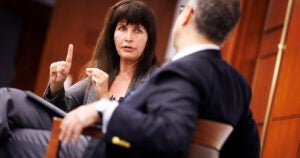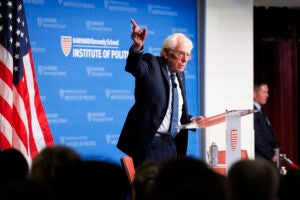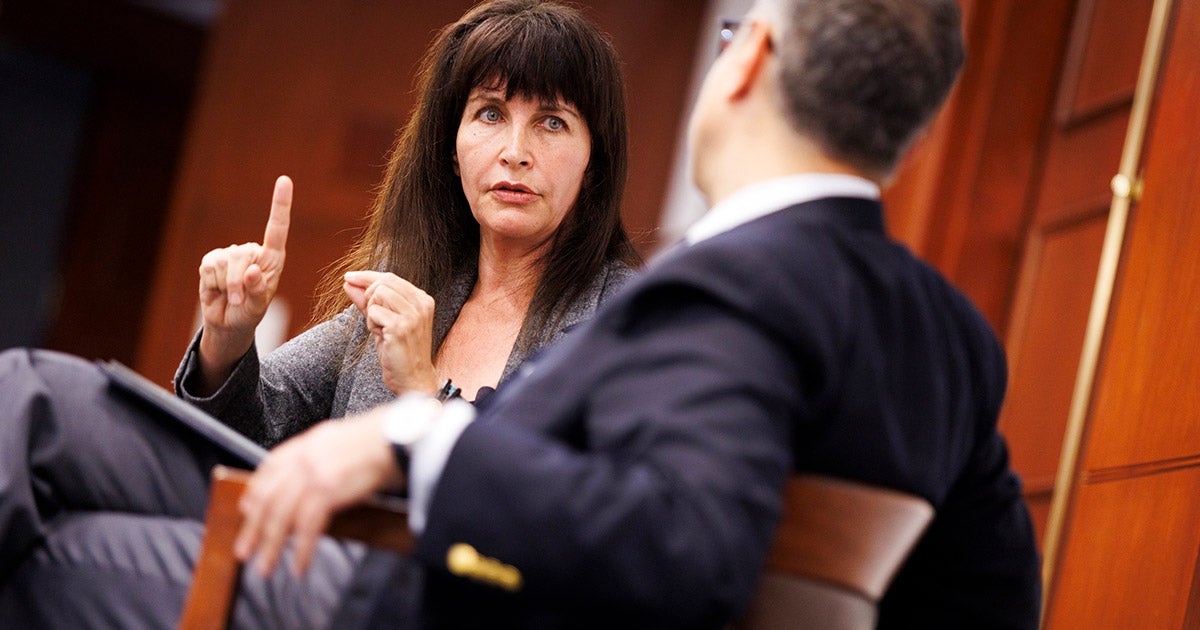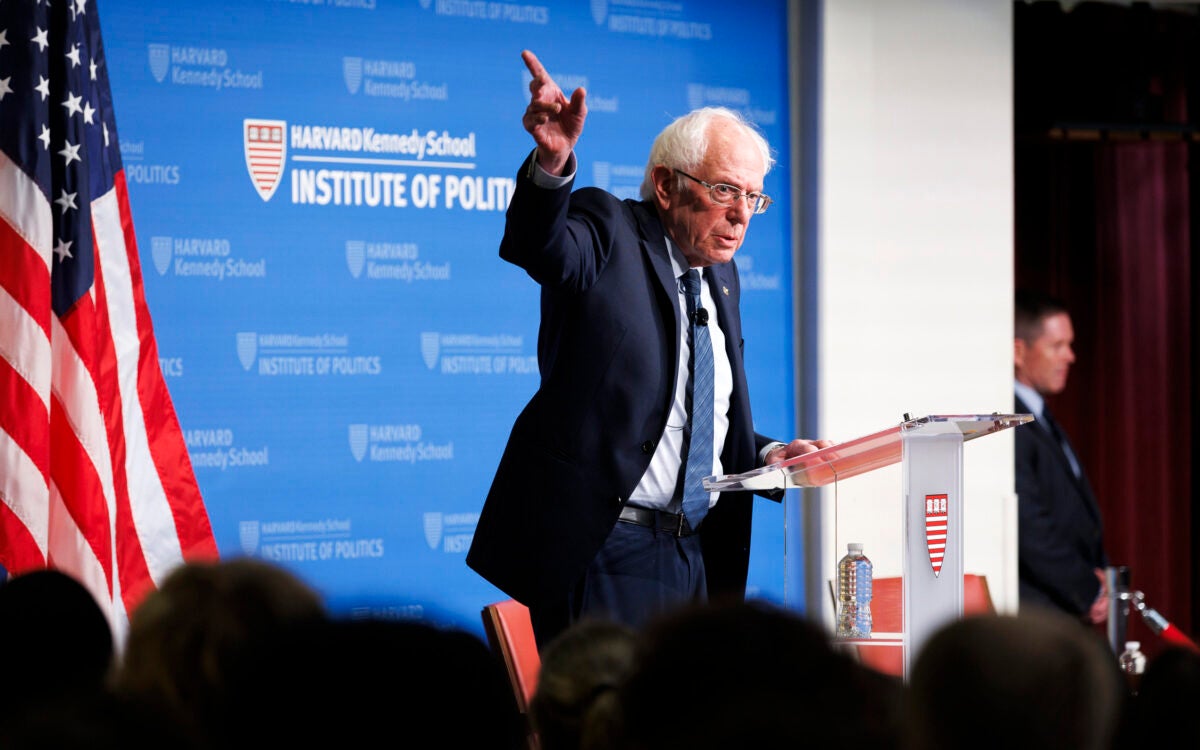Harvard goes to war
University’s key role in World War II helped the Allies to triumph
This year will mark the 70th anniversary of the Japanese attack on Pearl Harbor on Dec. 7, 1941, the “day of infamy” that drew the United States into World War II.
And tomorrow (Nov. 11) is Veterans Day, the first at Harvard since the University reinstated a campus office for the Reserve Officers’ Training Corps. So what better time to recount Harvard’s role in World War II:
- On May 29, 1940, Harvard President James Bryant Conant, speaking as a private citizen, delivered a national radio broadcast urging aid to the Allies in preparation for war. “We must rearm at once,” he said, sentiments that earned him jeers from the isolationist community.
- That same year, Harvard faculty members formed the American Defense-Harvard Group in support of aiding the Allies.
- Early in 1941, Conant — an increasingly influential voice for the military draft, lend-lease programs, and other preparedness stances — led a mission to England on exchanging scientific information.
- By 1941, Harvard scientists were mobilizing, and had started research on explosives, radio electronics, and military medicine.
- The day after the Pearl Harbor attacks, Conant spoke to 1,200 students gathered in Sanders Theatre to hear the broadcast of President Franklin Roosevelt’s war message to Congress. Conant pledged to bend Harvard’s full resources to the war effort.
- By 1942, with Harvard dubbed “Conant’s Arsenal,” researchers were at work on radar jamming, night vision, aerial photography, sonar, explosives, napalm, a protocomputer, blood plasma derivatives, synthesized quinine, anti-malarial drugs, and new treatments for burns and shock. Other researchers worked on code-breaking and atomic bomb research. By 1945, Harvard income from government contracts was $33.5 million, the third highest among U.S. universities.
- Harvard redid its academic calendar to add a third (summer) semester, and for a time largely became a military training school. ROTC members drilled in Memorial Hall with WWI-era rifles. Drills in Harvard Yard scalped off the grass.
- By May 1942, Army and Navy ROTC members at Harvard numbered 1,600.
- Harvard’s curriculum was expanded to include aerial mapping, meteorology, camouflage, military geology, and accelerated programs A secret radio electronics detection course trained 2,000 Army, Navy, and Marine officers a year. An Army chaplains’ school, with non-Harvard faculty and 330 students per four-week session, met in the Germanic (now Busch-Reisinger) Museum.
- By June 1942, all of Harvard was on a wartime footing. Secretary of War Henry L. Stimson spoke at Commencement, along with Secretary of the Navy Frank Knox. About 200 faculty members had already joined the service.
- At the ceremony, Conant noted that war-related science was expanding so fast that it required space in Harvard Law School’s Austin Hall as well as the Hemenway Gymnasium. “Of what goes on behind those closed doors,” he added, “no word may now be told.”
- By then, Conant was chairman of the National Research Defense Committee, which would issue nearly 900 contracts during the war. Harvard’s largest projects were the $16 million Radio Research Laboratory and the $8 million Underwater Sound Laboratory.
- Chemistry Professor George B. Kistiakowsky tested new explosives and later led the Manhattan Project’s search for a way to trigger a nuclear bomb.
- Professor of organic chemistry Louis Fieser invented napalm, lightweight incendiary grenades, and the M-1 firestarter used for sabotage — and known as the “Harvard candle.”
- Harvard astronomer Fred Lawrence Whipple invented the strips of aluminum foil, or “chaff,” used to dupe enemy radar. Whipple was dubbed the “Air Corps chief of chaff.”
- The Electro-Acoustic Laboratory on Oxford Street researched ways to quiet noise in long-range bombers. One discovery to come out of that lab was fiberglass.
- In the Underwater Sound Laboratory in Hemenway, 450 employees (many of them women) worked on developing sonar. Some of the field testing was done at Spy Pond. The lab’s bearing-direction indicator for sonar and torpedo steering helped break the dominance of Nazi submarine wolf packs.
- At the Business School, the Harvard Fatigue Laboratory helped set standards for clothing, nutrition, and survival gear in extreme environments.
- The Harvard project that most influenced postwar science was the Mark I “automatic sequence-controlled calculator,” a protocomputer developed in the Computation Laboratory by Howard Hathaway Aiken, Ph.D. ’39, in cooperation with IBM. Unveiled in the summer of 1944, it was 51 feet long, and contained 72 tiered adding machines and 500 miles of wire. It was used to calculate ballistic tables and for Manhattan Project calculations.
- Harvard’s first cyclotron, a $55,000, 85-ton particle accelerator built in 1939 that was used in nuclear physics experiments, was shipped to Los Alamos, N.M., in 1943 for work on the first atomic bomb.
- In September 1943, British Prime Minister Winston Churchill accepted the honorary degree he had been offered in May. “The empires of the future,” he said in a speech on Anglo-American unity, “are the empires of the mind.”
- On June 29, 1944, with Harvard remaining a virtual military training facility, graduating seniors in the regular degree course numbered only 19, the smallest number since 1753.
During World War II, almost 27,000 Harvard students, alumni, faculty members, and staff members served in the armed forces, and 697 die




